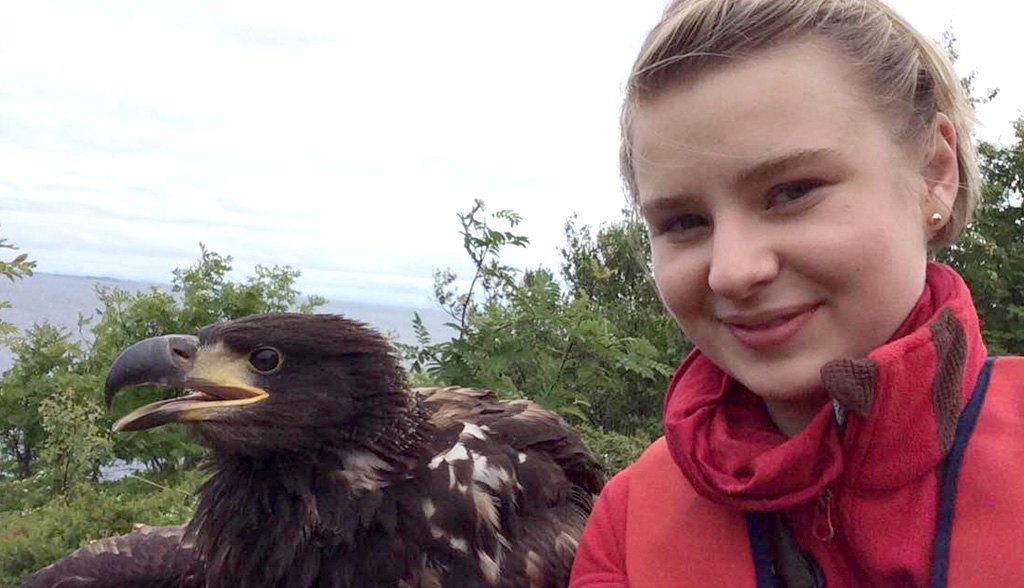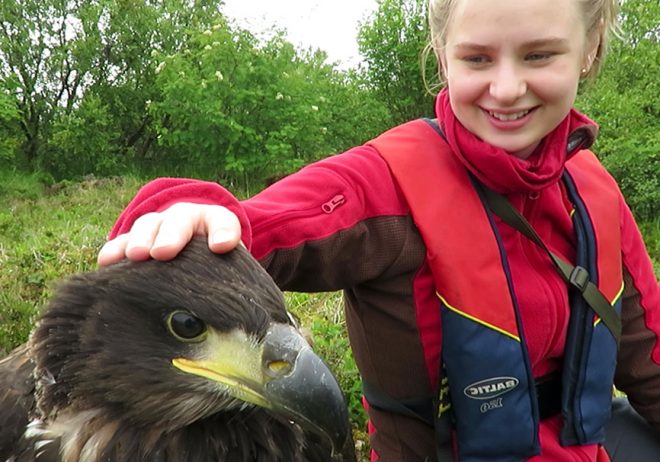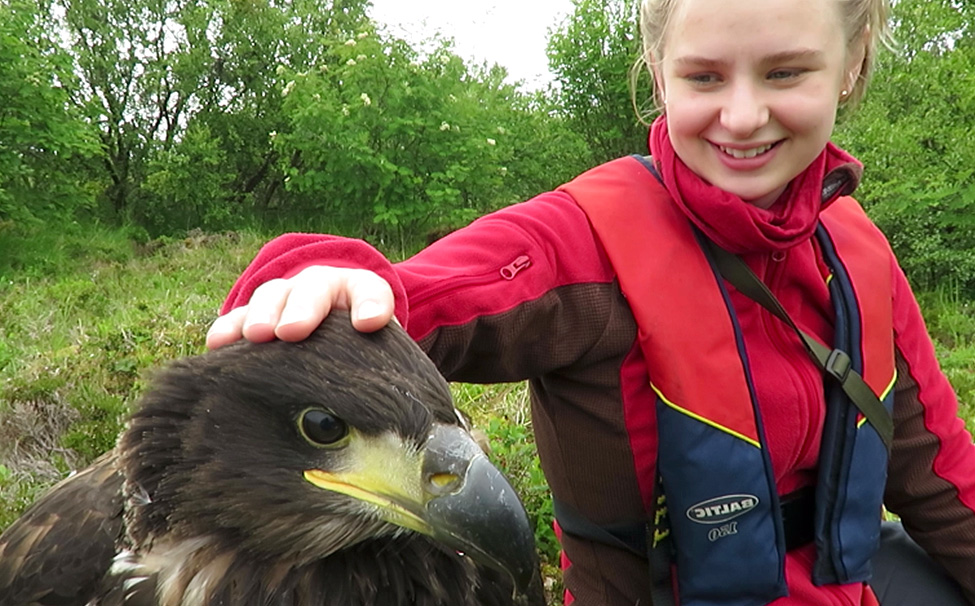
When I try to explain to people what I do for my research, they seem to be more interested in how I catch and approach my subjects, than what I detect in them. However, it is pretty cool what I can tell about a bird by studying its feathers.
My name is Mari Løseth and I’m an environmental detective, also called an ecotoxicologist. This is a fancy title for someone who studies contamination in wildlife. For my PhD project at the Bird Ecotoxicology group (IBI, NTNU) I investigate environmental contamination in birds. I want to find out how new, current-use and regulated compounds released into the environment can affect birds feeding high up in the food chain. I want to know how they are coping. Are they more stressed with higher contamination load? Or will the compounds they are exposed to challenge their immune system?
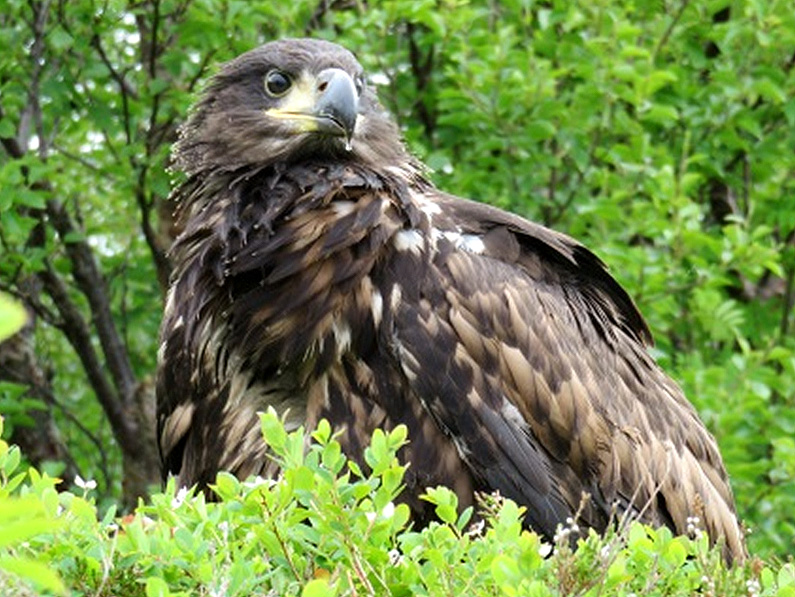
Why?
I wanted to work with birds because they are fascinating and complex creatures. They are long lived, intelligent, beautiful and the coolest thing of all – they can fly. The birds I study, the white-tailed eagle (Haliaeetus albicilla) and the glaucous gull (Larus Hyperboreus) are both top predators in their habitats.
Looking at them, it might be hard to imagine that the inconspicuous glaucous gull could be anywhere near as superior a hunter as the huge white-tailed eagle with its impressive claws and over 2 meter wingspan. Truth is – despite being around half the size – the gull is equally fierce. The two species have quite similar diets – varied, opportunistic and seasonal. Prey species are often fish, other seabirds and mammals.

Feeding on such a high level in the food chain is great as you usually don’t have to compete for food. Unfortunately, it also has some down sides.
Contaminants
When feeding high up in the food chain, the birds risk exposure to high concentrations of several environmental contaminants. Some of these contaminants possess bioaccumulative properties. This means that the concentrations of the compound will increase in the exposed individual, because the uptake rate is higher than the excretion rate. Some of these compounds can also increase with each step up in the food chain, resulting in very high concentration in predatory species. This process is
called biomagnification.
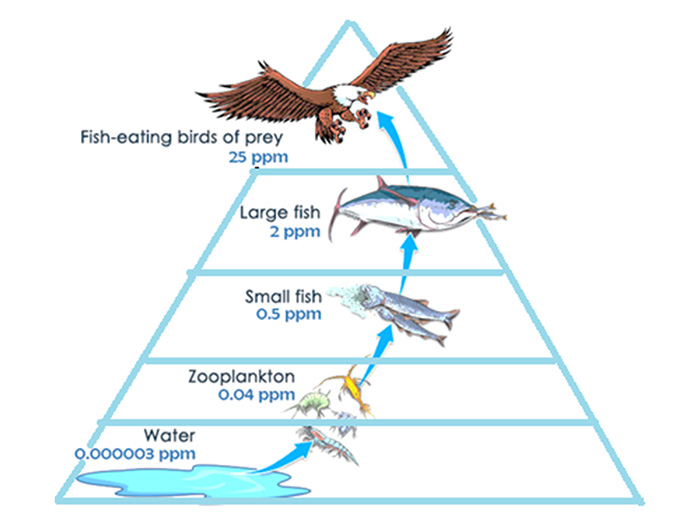
As both the white-tailed eagle and the glaucous gull are feeding on the top of the food chain they can be exposed to high contamination levels, even though they live in non-urbanized and remote areas. This is due to the physical and chemical properties of the compounds. They can be volatile or bind to particles and thus be transported long-distances with wind and/or water currents away from the pollution source, reaching remote areas such as the high Arctic.
The compounds I investigate are the ones making our daily products water- and dirt repellent, non-flammable and long lasting, such as perfluorinated compounds and flame retardants. This is done by introducing the chemicals with the desired properties into consumer products. And as we produce, use and dispose of the products, these chemicals can be released into the environment. At this point they become environmental chemicals, contamination or pollution – and they can potentially harm vulnerable ecosystems already under a lot of stress from urbanization, deforestation and climate change.
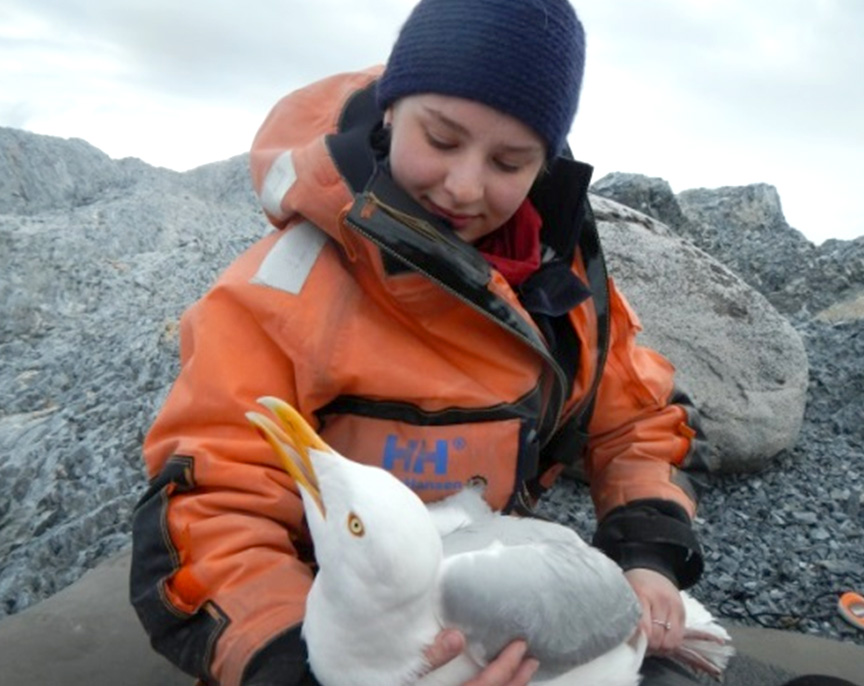
What for?
I aim to look at differences in contamination patterns in different habitats to see if some locations are more exposed than others. When doing this, we usually look at concentrations in blood plasma. This time I’m also investigating the compounds in the feathers, in hope that this can replace the blood samples and the need to capture and restrain the birds when collecting samples.
To see how the birds are coping with the contaminants, I look at their general health and immune functioning. I do this by exposing extracted lymphocytes (a type of white blood cells present in the blood) to an immune challenge and observing the response. In order to measure how stressed the birds are, I detect their major stress hormone – corticosterone – in their blood and feathers. The blood will tell me how stressed the birds are right before and in the actual sample situation, while the feather sample will allow me to assess how stressed they have been over a longer period (during the period of feather growth).
How can you detect this in feathers?
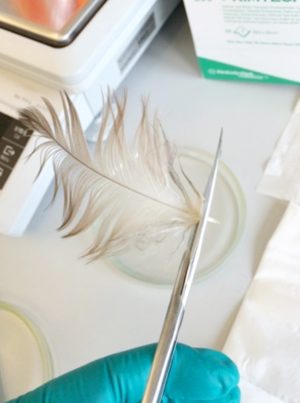
Well, during the growth, the feather is continuously supplied with blood though the “stem” of the feather, the rachis. As the feather continues to grow, the blood supply of the new grown feather part is shut off, and the hormones and compounds that were supplied to the feather remain there forever. This process of incorporation continues until the feathers if fully grown and the blood supply is disconnected. The feather thus integrates contaminants and hormones present in the blood during the whole period of feather growth. This makes the feather an ideal sample matrix – in an ideal world.
A lot of research needs to be done in order to find the right method to detect all the desired compounds in the feather, and this is something I aim to do during my PhD.
I hope to see that the birds are coping well, and that their health and immune system will not be affected by their contaminant load, even if they become stressed as I approach them in the field for another session of measures and selfies.
Wish me luck!
